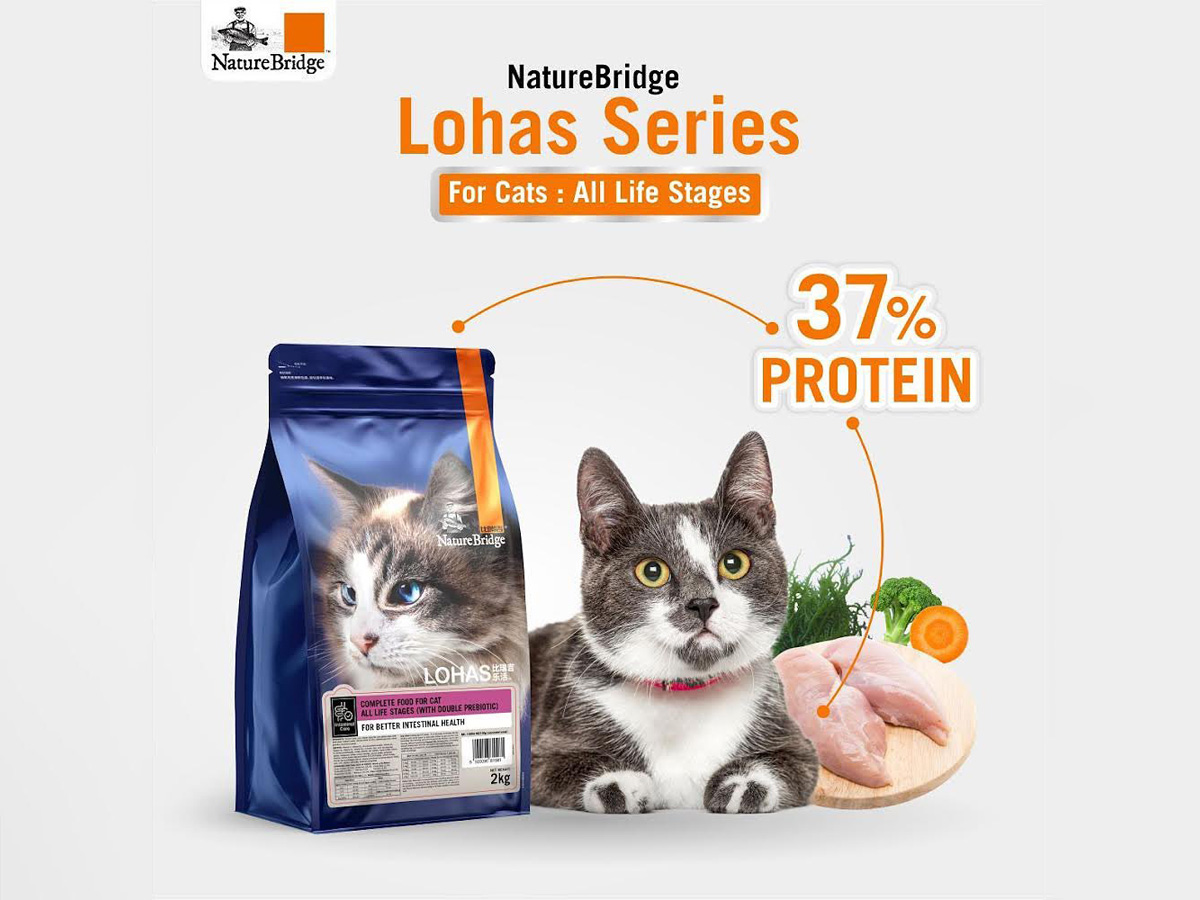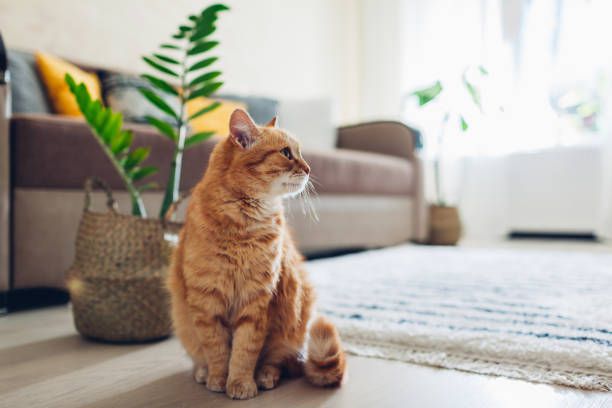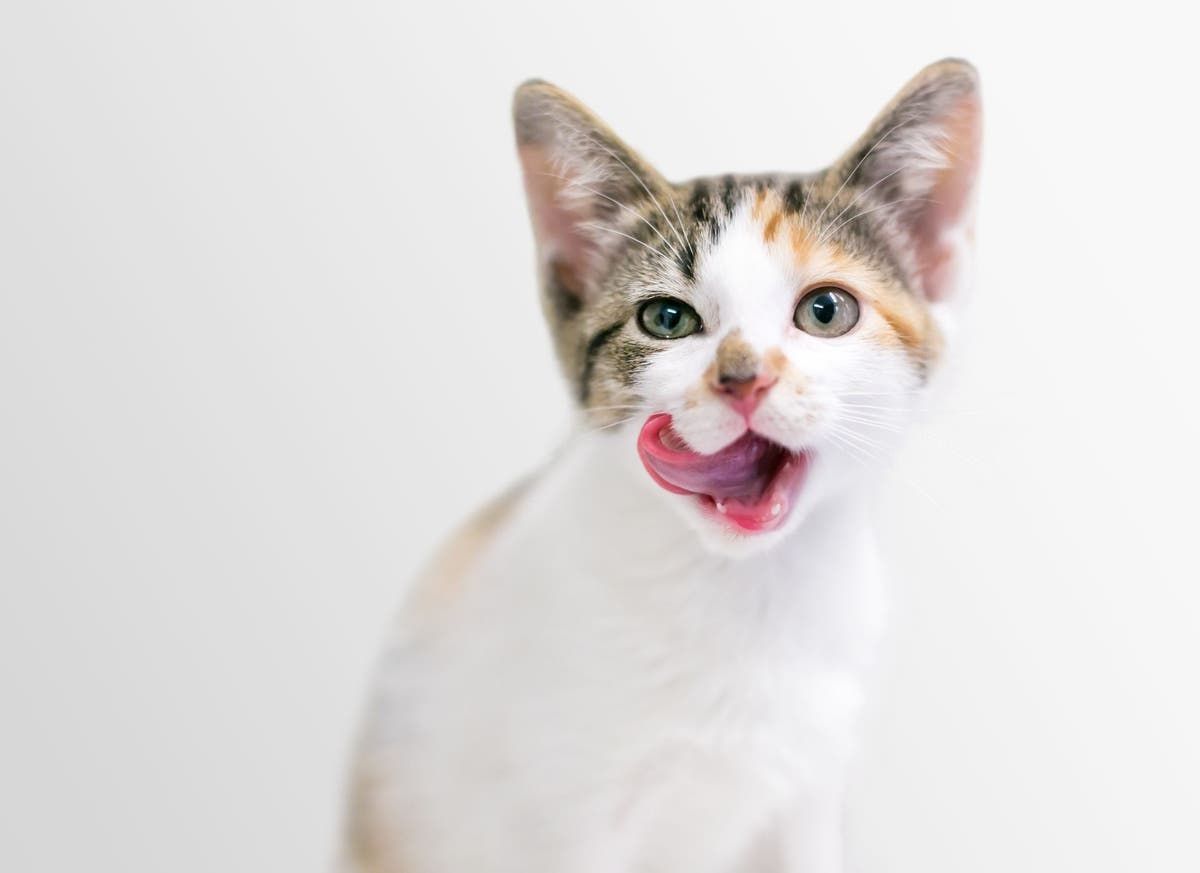When your vet says your dog or cat needs to lose weight, your first instinct might be to cut back on food or try a "diet formula" from the pet store. But weight loss in pets isn’t as simple as just feeding less — it’s about choosing the right nutrition in the right amount for their needs.
Weight management pet foods are specially formulated with lower calories, higher fiber, and often added L-carnitine to support fat metabolism. These diets help your pet feel full while still losing weight at a healthy pace. But not all "light" or "weight control" foods are the same — some may still contain fillers or excess carbs that don’t help long term.
Before making a switch, talk to your vet. They can recommend a vet-approved formula based on your pet’s age, breed, and medical history. In some cases, prescription weight loss diets might be more effective, especially for pets with obesity-related conditions like diabetes or arthritis.
Transitioning to a new food should always be gradual — over 7 to 10 days — to avoid digestive upset. Mix small amounts of the new food with the old, increasing gradually. And remember, food is only part of the equation — regular exercise and limiting treats are just as important in your pet’s weight loss journey.
Tips When Starting a Weight Loss Diet:
- Always check calorie content per cup/can — it varies by brand.
- Use treats from their main food (kibble as rewards).
- Avoid table scraps — these can derail weight loss fast.
- Keep a daily feeding log to stay consistent.
- Recheck weight and body condition every 4–6 weeks with your vet.
Conclusion: Healthy Change Starts with the Right Fuel
Helping your pet lose weight isn’t about starvation — it’s about smarter choices. With the right weight loss diet, your dog or cat can slim down safely, stay energized, and avoid serious health risks. When in doubt, work with your vet and don’t rush the process — slow and steady really does win the race.
Besides veterinary checkups, we also need to be smart pet owners when choosing daily food for our beloved pets. Daily food that is high in protein is one of the keys to a good pet diet. Because protein can be a primary source of energy without contributing excess calories like carbohydrates or other sources of calories. NatureBridge Lohas for cats and dogs is a suitable daily food that is high in protein but can also be an appropriate diet food. Remember, dieting for pets doesn't mean starving them! Get NatureBridge Lohas exclusively at the official NatureBridge Indonesia store or at the official CPPETINDO store.
Feeding your pet is one of the most basic ways to show love — but did you know that even a little “extra” food each day can lead to serious weight gain over time? Many dog and cat owners unintentionally overfeed because they rely on guesswork or free feeding instead of proper portion control.
The ideal portion depends on a few key factors: your pet’s weight, age, breed, activity level, and whether they’ve been spayed or neutered. Active pets and puppies/kittens need more energy, while indoor or older pets usually require fewer calories. That’s why reading the feeding guide on your pet’s food label is a good start — but it shouldn’t be the only guideline.
Vets recommend measuring food using a standard measuring cup, not by eye or instinct. Feeding twice a day (rather than leaving food out all the time) also helps regulate metabolism and makes it easier to monitor intake. For treats, follow the “10% rule” — treats should make up no more than 10% of your pet’s total daily calories.
Tips for Smart Portion Control:
Use a kitchen scale for precise portions if needed (especially for small pets).
Stick to a consistent feeding schedule — morning and evening.
Replace high-calorie treats with healthy alternatives (e.g., carrots for dogs, freeze-dried meat for cats).
Reassess your pet’s weight every 4–6 weeks and adjust portions accordingly.
Ask your vet for a personalized feeding plan if you’re unsure.
Conclusion: Less Can Be More!
When it comes to your pet’s health, a few grams of food can make a big difference. Portion control is one of the simplest, most effective steps to maintain a healthy weight — and it’s completely within your control. With mindful feeding habits, you’re setting your dog or cat up for a longer, more vibrant life.
Just like humans, being overweight can lead to serious health issues in both dogs and cats. It’s not just about appearance — excess weight increases the risk of diabetes, arthritis, heart disease, and even shortens your pet’s life span. Unfortunately, many pet owners don’t realize their furry friend is overweight until it’s already affecting their health.
The most common causes? Overfeeding, lack of exercise, and too many treats (yes, those puppy-dog eyes are powerful!). Some pet parents also misjudge portion sizes, especially for indoor pets with limited activity. Breed, age, and whether the pet is neutered also play roles in how easily they gain weight.
The good news is, managing your pet’s weight is completely doable with a little consistency and care. Start by visiting the vet to check your pet’s ideal weight and discuss a plan. They can help you identify the right food, feeding schedule, and daily calorie needs. Remember: weight loss in pets should be gradual — fast weight loss can actually be harmful.
Finally, combine healthy feeding with fun, regular movement. Dogs may benefit from daily walks, agility play, or fetch. Cats love interactive toys, laser pointers, and climbing shelves. Keeping them active isn’t just good for their waistline — it boosts their mood and strengthens your bond too.
Tips for Managing Your Pet’s Weight
✓ Use a measuring cup for food — don’t eyeball it!
✓ Avoid table scraps and limit high-calorie treats.
✓ Choose low-calorie training treats or use part of their kibble ration as rewards.
✓ Schedule playtime daily — at least 15–30 minutes of activity.
✓ Weigh your pet monthly and track progress with your vet.
✓ Look for weight-control formulas in pet foods, especially for indoor or senior pets.
Conclusion: Healthy Pets, Happy Lives
Managing your pet’s weight isn’t just about helping them look better — it’s about helping them live longer, healthier, and happier lives. With the right balance of nutrition, activity, and love, your dog or cat can maintain a healthy weight and thrive. Start with small steps today, and your furry friend will thank you for years to come.
Some people gravitate toward big dogs. They love Mastiffs who think they’re lap dogs or Bernese Mountain Dogs that make everything around them seem small by comparison. The list of big breeds goes on and on—from slender Afghan hounds to clumsy Great Danes, slobbery St. Bernards to fluffy Cuvacs. These breeds are all unique and different in their own way, but all have size in common.
Unfortunately, with size comes the potential for certain illnesses and health conditions. Bigger dogs are more prone to specific ailments that their smaller cousins might not experience. It’s important for big dog lovers to understand this and to be aware of the conditions that may pose a threat for their oversized companions.
Here’s a look at eight ailments that commonly affect large-breed dogs—what they are and what they mean for the health and wellbeing of your pet.
1. Dysplasia
Dysplasia can occur in the hips, elbows or both. It’s a condition that arises when the hip or elbow joint doesn’t fit properly into the socket and deviates, causing everything from pain during walking to lameness. While German Shepherds are the breed most commonly associated with dysplasia, many larger breeds suffer a proneness to developing it. Mastiffs, Great Danes, and Great Pyrenees all have a higher-than-average risk of suffering from hip or elbow dysplasia. Many times, surgery can alleviate the pain associated with the condition.
2. Panosteitis
Because they grow quickly and to such great sizes, many large-breed dogs suffer from Panosteitis (Pano) during their maturation. This condition affects the legs and can cause everything from temporary lameness to pain. It’s a condition defined by bone inflammation and often goes away by itself in time. That doesn’t make it any less painful for your pup, though! Pano is similar to growing pains in humans, which means your pup can benefit from gentle massage and rest.
3. Dilated Cardiomyopathy
Dilated Cardiomyopathy is a condition affecting the hearts of larger dogs—specifically the different chambers of the heart. Dilated Cardiomyopathy causes the heart to literally swell, which stretches the aortic walls too thin. This, combined with inflammation of heart tissue, makes Dilated Cardiomyopathy a dangerous condition for bigger pups. Unfortunately, it’s also a lifelong condition, but it can be managed with medication.
4. Aortic Stenosis
As something of an opposite to Dilated Cardiomyopathy, Aortic Stenosis involves the narrowing of aortic valves, which decreases blood flow. Many times, dogs can seem perfectly normal until the aortic valve becomes too restricted, and they collapse due to lack of blood flow. It’s a condition primarily affecting bigger dogs and is hereditary, which makes it easier to identify if you have a consistent lineage. This condition can be managed if discovered early.
5. Spondylolisthesis
Bigger dogs have bigger physiology, which can cause spinal issues to form. Spondylolisthesis is one of them. Often called “wobblers” because of the way a dog sways back and forth, spondylolisthesis is an abnormal curvature of the spine. Unfortunately, the disease is progressive and will degenerate your dog’s quality of life without proper management. Medication can be effective in some cases; however, surgery is often recommended. Even then, there’s no stopping spondylolisthesis—only delaying its effects.
6. Cherry eye
Cherry eye is one of those conditions that doesn’t necessarily affect bigger dogs—rather, the specific breeds prone to cherry eye are larger breeds. While it’s most associated with Mastiffs, other “droopy” dogs are prone to developing cherry eye. This condition sees the dog’s third eyelid protrude from the eye, causing a painful mass that can make it difficult for them to see. Left unchecked, it’ll become more and more inflamed and red—thus the name, “cherry eye.” It’s correctable with surgery.
7. Arthritis
The bigger the body, the more gravity takes its toll. As a result, bigger dogs are more prone to developing arthritis in their joints, including the knees and elbows. Arthritis tends to set in during the latter half of a dog’s years, so it’s important to start watching out for signs after your big breed turns 5 or 6 years old. If they seem to have trouble getting up from a laying position or are reluctant to use stairs, it might be time to chat with your vet about potential arthritis management strategies.
8. ACL tears
Big dogs are known for their powerful muscles and strength. Unfortunately, they don’t always have the strongest ligaments to support them. As a result, larger breeds commonly face ligament tears and strains—especially ACL tears. All it takes is one sharp turn at a high-speed gallop to cause a tear or strain that might leave your poor pup limping. You can help them avoid ACL tears by exercising them regularly and keeping them within healthy weight parameters.
Big breeds need extra love!
Every breed has their own unique health concerns to worry about—big dogs especially. Understanding some of the potential afflictions your big pup might be up against can help you protect them and make sure they get the care they need. Consult with your vet about any of these conditions and how to manage them if your big breed is diagnosed with one.
Source: https://petwellbeing.com/
Years of lavishing a pet with treats can leave them appearing a bit large around the gut. Obesity in pets can sneak up on you, and once all those extra pounds are on, they’re hard to get off!
Some pet owners might be tempted to turn to weight loss supplements as a quick way to help their pup shave off some fat. However, it’s not always guaranteed that these pills actually work—or that they’re safe for your furry friend. Get the facts on weight loss supplements to ensure you’re making healthy decisions for your pet.
Rule #1: Ask your vet for advice
Always check with your vet before purchasing a weight loss supplement. Many are available over the counter at pet and health food stores, but that doesn’t necessarily mean they’re safe. Supplements are largely unregulated and could put your pet’s health at risk if you don’t know exactly what’s going into their body. Your vet should always determine whether weight loss supplements are appropriate for your pet and which ones contain the ingredients that will help your pet the most.
Veterinarians usually recommend weight loss supplements only as a last resort, because even the most popular brands available today have inconsistent results. For instance, many have praised chitosan for its ability to excrete fat cells from the body. The truth is, studies demonstrate that the level of fat excretion is often too small to make an impact on your pet’s weight loss. Some weight loss supplements are potentially dangerous! For example, some studies have linked conjugated linoleic acid (CLA) to an increased risk of insulin resistance and diabetes.
Additionally, weight loss supplements can be risky because you never know how they’re going to interact with your dog’s breed and health conditions. Owners who don’t consult a vet for guidance might accidentally give their pet the wrong dosage. Smaller dog breeds can’t handle the same number of milligrams a vet might prescribe to larger ones.
The bottom line is that weight loss supplements may help your pet, but they should never be given without veterinary approval first.
Potential weight loss supplements for pets
If they deem it necessary, vets can prescribe one of several weight loss supplements. Omega-3 fatty acids have been approved for dogs in the form of fish oil. This compound has been found to encourage weight loss in cats and dogs. Omega-3s also have a range of other health benefits for pets! Vets recommend a supplement instead of actual fish because the latter can add extra calories to your dog’s diet.
Alternatively, vets might recommend sprinkling white kidney bean extract on your dog’s food to aid in weight loss. White kidney beans prevent starches from breaking down into simple sugars by blocking an enzyme called alpha amylase. Sugar provides both dogs and humans short-term energy but is considered unsustainable in the long run. As a natural starch blocker, white kidney bean extract encourages your dog’s body to derive energy from fat and proteins, instead.
Dirlotapide is another popular choice among veterinarians. It was the first FDA-approved weight loss supplement designed exclusively for dogs and is available only with a prescription. Dirlotapide suppresses a dog’s appetite by accumulating fat in the intestinal tract. The medication prevents fat cells from getting absorbed into the bloodstream, which leads to a dog feeling full. Unlike other supplements available on the market, multiple studies have confirmed that dirlotapide is both safe and effective for weight loss in dogs.
Prevention is key in pet weight management
When it comes to weight gain and obesity, prevention is the best medicine. It’s much easier to keep the weight off to begin with than to treat a pet who’s accumulated extra weight. Owners can help their pets maintain a healthy weight by placing them on a calorie-restricted diet and feeding them nutritious foods. No two pets are the same, so ask your veterinarian for advice on which types of foods you should be feeding your dog or cat. They’ll clue you in on which brands contain less fat, high-quality proteins and all the nutrients your pet needs.
A healthy diet isn’t complete without regular exercise. Pets need a balance between their caloric intake and how much energy they burn every day. Make sure your cat or dog gets up and moves around in some way, whether that be daily walks, play time with chew toys, fetch or running around outside. Your vet can suggest more ideas for how to encourage an active lifestyle that keeps off the extra weight.
More research is needed to prove the effectiveness of weight loss supplements for overweight cats and dogs. A few of them might work, but owners should administer them based on guidance from their veterinarians. Only a professional can recommend supplements with proven results and steer you away from ones that aren’t worth it.
Source: https://petwellbeing.com/
When you first adopted your cat, you were probably given a recommendation for a particular type of food or had a preferred brand you opted for right away. However, after months or even years of providing your pet with the same food, there may come a day when you feel the need to change your cat’s food type.
In general, changing your cat’s food regularly isn’t necessary. As long as your pet is getting all the nutrients they need to live a happy and healthy life, you could feed them the same thing forever!
That being said, there are a few instances in which switching your cat to a different food is a good idea. If a change in diet is necessary for your kitty, make sure to consult your veterinarian and conduct the switch gradually for the best and safest results.
Reasons to change your cat’s food
Once your vet has approved a cat food for your furry friend, you don’t need to change it on a regular basis. However, certain health concerns may require you to seek out a new type of food that will meet your cat’s needs.
Recalls
One of the most important, yet somewhat uncommon, reasons to change your cat’s food is a health and safety recall. Once you hear about a recall and double-check that your cat’s food is included, you’ll want to remove your cat’s access to the food immediately, watch them for signs of illness and start feeding them a similar type of food that is safe right away.
Life stage
Another key reason to start feeding your cat a new type of food is that they have entered a new life stage. Most pet manufacturers sell food specific to a particular age group, such as kittens, adult cats and seniors. These food types may be fortified with certain nutrients; for example, kitten food has extra protein to help your kitten grow, while senior food may include special nutrients to help with age-related illnesses.
When your cat enters a new stage of life (from kitten to adult and from adult to senior), you should choose a new type of food that is most appropriate for their age. Speak with your veterinarian to identify the best food for your pet’s specific needs.
Allergies
Although they aren’t very common, cats can develop food allergies that are triggered by particular cat food ingredients. If your cat begins experiencing itchy, inflamed skin or vomiting and diarrhea, they may be sensitive or allergic to their food.
Feline food allergies can be triggered by a wide variety of ingredients, so you’ll want to work with your vet to identify the specific allergen through an elimination diet. During this process, your cat will need to be put on an entirely different diet.
Specific health conditions
If your cat develops a health condition over the course of their life, there may be a type of food that is more appropriate for their healthcare needs. These types of foods can vary, including everything from weight-management foods to help obese cats to foods fortified with urinary-health ingredients to assist with urinary tract diseases. Other specially formulated foods may help ease discomfort from arthritis, increase fiber to help with digestion and much more.
Similarly, if your pet’s current food doesn’t appear to be meeting their nutritional needs, you may want to switch to a higher-quality cat food that offers better ingredients and additional nutrients.
Regardless of the reason you’re switching your cat’s food, you should always consult your cat’s veterinarian before doing so to ensure the new food will be appropriate for your cat at their current stage of life and state of health. If you need recommendations for a new pet food, your vet should be able to answer questions and point you in the right direction.
How to successfully transition your cat to the new food
Once you’ve identified a new food for your furry friend and your vet has given their approval on its safety, you may be tempted to pull your cat off the old food and give them the new food immediately. However, this is a big mistake! Switching your cat’s food too quickly can lead to gastrointestinal upset, including diarrhea and vomiting.
It’s very important to switch your cat over to their new food gradually, unless making an abrupt change is absolutely necessary (as is the case when food has been recalled). The change to the new food should occur over the course of at least seven days, during which you should alter the percentage of old food versus new food slightly each day.
On day one, use a mix of mostly old food with a little bit of new food. On each subsequent day, take out a little more of the previous food while adding in more and more of the new food until your cat is eating all-new food every day.
Once you complete the switch successfully, monitor your cat for a few weeks to ensure he or she does not show any changes in behavior, health or appearance. If they do, speak with your vet about finding a new food that will be better for them.
Source: https://petwellbeing.com/










